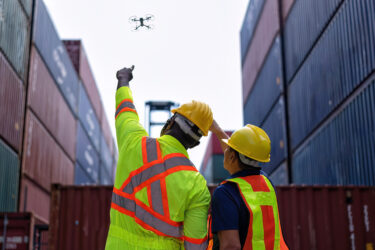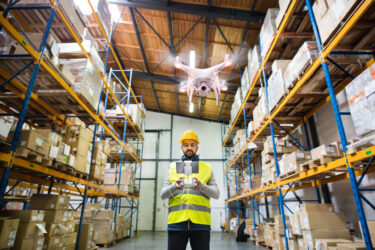

The collaborative economy often called the sharing economy, is already a commonly known social and economical phenomenon where we observe a direct provision of services by people as well as sharing, co-creation, co-buying, etc., which enables a radical increase in efficiency of use of resources. The collaborative economy brings a fundamental change in organizational and distribution models, moving towards dispersed networks of interconnected units and communities. Read about enhancing urban and industry resilience with connectivity, collaboration, and transparency.
Industry and collaborative economy
One of the main foundations of the collaborative economy is the superiority of access over ownership. Companies like Uber, Airbnb, TaskRabbit, and many others, have grown into globally recognizable giants thanks to the assumption that you do not have to own goods to use them. However, while end-users already see an outcome of this kind of approach, the industry needs to redesign the way they run manufacturing, transportation, logistics, etc.
Since the relationship between sharing economy models and the increase in efficiency of use of resources has been proven, the collaborative approach became an opportunity for innovation in industries where data became a resource. Progressing digitalization influenced significantly the amount of data that is collected, processed, and transformed into information. Companies realized that sharing the data and making it accessible for business partners or customers brings measurable values like improved management, time and money savings, boosted brand awareness, and many more.
Resilience of systems
Companies are involved in tens to thousands of business processes every day, which gives a widespread network of parties working together and exchanging data continuously. The stability of this kind of system depends on many conditions like the experience of employees, time pressure, budgets, or IT tools used by each vendor. Every supply chain, factory, transportation infrastructure, city (or smart city), building, or even the whole economy of a country is an example of a system that requires stability and clear procedures in case of any disturbances.
Resilience in the context of systems may be explained as the ability of the system to return to the original state after an unexpected disruption and the ability to react to turbulent changes. It comes of great importance when we discuss systems responsible for human safety. The teams managing complex, urban, and industrial infrastructure needs solid and reliable tools to provide continuous and undisturbed services to their customers.
The exchange of data and information is crucial for anticipation, detection, and recovery of disruptions. Equipped with tools like the Internet of Things and big data applications, connectivity, collaboration, and transparency become a new standard for industrial players and organizations entering the era of industry 4.0.
Following science-baked ideas for industry resilience
Chief Innovation Officer at DAC.digital, Mateusz Bonecki, Ph.D., has been speaking about the challenges and requirements for IT solutions in the context of visibility- and transparency-based resilience at the 2nd Conference on Organizing Urban Resilience in Prague this week. The presentation included the key findings from the paper, co-authored with Krzysztof Radecki (CTO) and Stanisław Raczyński (CSO), summarizing relevant software architectures, methodologies and European initiatives, including the International Data Spaces Association data space framework, Digital Product Footprint architecture for collaborative product lifecycle management, and applications based on distributed ledger technologies. The paper, concluded with recommendations for coordination of activities focused on the implementation of secure, trusted, multi-stakeholder ecosystems for the exchange of sensitive industrial data will be published later this year.
The 2nd Conference on Organizing Urban Resilience brought together experts from different areas. The goal was to discuss the complex task of organizing and enhancing urban and industrial resilience and provided a platform to formulate and look for adequate solutions.
Knowing the importance of urban and industry resilience, the European Committee of Regions and European Economic and Social Committee support initiatives like the 2nd Conference on Organizing Urban Resilience stimulating the growth and popularization of urban and industrial resilience concepts.




